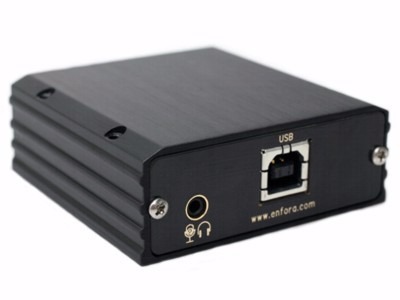Today we will see how to list USB devices in Linux and their properties such as speed, BUS, class, type details etc. This is part of our on going hardware detection series. We already covered following stuff.
- Drivers Enfora Lp Usb Devices Download
- Drivers Enfora Lp Usb Devices Windows 10
- Drivers Enfora Lp Usb Devices Free
What is USB?
USB(Universal Serial Bus) is a stranded developed to replace different types of BUS’s available. This is a solution devices to eliminate vendor lock-down of hardware ports, so that BUS’s will be identical across different devices from different vendors. USB devices solve one more problem i.e. speeds. USB devices can reach up 5GB/s as of this writing where as PCI and serial devices have less speeds. Depending of USB firmware, it’s categorize in to USB 1.0, USB 2.0, USB 3.0. USB have competitor in the from of Thunderbolt interface.
Discover the new possibilities with the new range of EVOO tablets, smartphones and laptops. EVOO tablets, Evoo laptops, Evoo smartphones. You should consider the compatibility of the application with which you intend to utilize the NI-488.2 drivers, not just the module or device. See the Related Links section for more information, and the 488.2 readme for compatibility information related to specific devices and operating systems. Windows will load new device drivers for the external hard drive You should see the external hard drive in Windows Explorer If the above step do not solve the problem, you need to reinstall USB controllers. This solution works especially when the loaded USB driver has become unstable or corrupted. A UMDF-based client driver is implemented as an in-process COM server (DLL), and C is the preferred language for writing a client driver for a USB device. Typically, the client driver implements several interfaces exposed by the framework.
As a Linux User/administrator we should know USB bus details as well as devices connected. In this post we will see how to use lsusb command to display different USB properties.
Example 1: List all the USB ports available
Output:
Let us try to understand above output in detail.
Bus 002Device 003: ID 0781:5567SanDisk Corp.Cruzer Blade
Bus 002 : This is bus number where SanDisk USB stick is attached.
Device 003: This is the third device attached to bus 002, the other two devices are “Linux Foundation 2.0 root hub” and ” Intel Corp. Integrated Rate Matching Hub”
ID 0781:5567 is the number given to this SanDisk, The number before : indicates the manufacture ID and number after : indicates device ID. To get more info on this visit Linux-USB site.

SanDisk Corp. Cruzer Blade is the name of manufacture and device name.
Example 2: Check how many USB ports available in your machine so that we can connect USB devices to these ports.
Output:
These ports may be internal or external to the system.
Example : Get detailed information of a USB device connected to a machine. Suppose I want to see information about /dev/bus/usb/002/005 device use below command
Output:
To know each of these types, click here.
Example 3: Get all the USB ports available and devices connected using verbose mode.
Clipped output:
Example 4: List all mass storage devices in your system.
Output:
From the above output we can find that there are total three USB storage devices present on the machine.
Example 5: Find USB devices protocol version.

Output:
Depending on the version, the speed varies. Below table give you clear idea about the speeds associated with these versions.
| USB 1.10 | 12Mb/s |
| USB 2.00 | 480Mb/s |
| USB 3.00 | 5Gb/s |

Example 6: Find USB device supported speeds by using tree structure option
Otuput:
In our next post we will see other hardware device properties.
The following two tabs change content below.- Docker: How to copy files to/from docker container - June 30, 2020
- Anisble: ERROR! unexpected parameter type in action:
ID 0781:5567 is the number given to this SanDisk, The number before : indicates the manufacture ID and number after : indicates device ID. To get more info on this visit Linux-USB site.
SanDisk Corp. Cruzer Blade is the name of manufacture and device name.
Example 2: Check how many USB ports available in your machine so that we can connect USB devices to these ports.
Output:
These ports may be internal or external to the system.
Example : Get detailed information of a USB device connected to a machine. Suppose I want to see information about /dev/bus/usb/002/005 device use below command
Output:
To know each of these types, click here.
Example 3: Get all the USB ports available and devices connected using verbose mode.
Drivers Enfora Lp Usb Devices Download
Clipped output:
Example 4: List all mass storage devices in your system.
Output:
From the above output we can find that there are total three USB storage devices present on the machine.
Example 5: Find USB devices protocol version.
Output:
Depending on the version, the speed varies. Below table give you clear idea about the speeds associated with these versions.
USB 1.10 12Mb/s USB 2.00 480Mb/s USB 3.00 5Gb/s Example 6: Find USB device supported speeds by using tree structure option
Otuput:
In our next post we will see other hardware device properties.
Drivers Enfora Lp Usb Devices Windows 10
The following two tabs change content below.Mr Surendra Anne is from Vijayawada, Andhra Pradesh, India. He is a Linux/Open source supporter who believes in Hard work, A down to earth person, Likes to share knowledge with others, Loves dogs, Likes photography. He works as Devops Engineer with Taggle systems, an IOT automatic water metering company, Sydney . You can contact him at surendra (@) linuxnix dot com.Drivers Enfora Lp Usb Devices Free
- Docker: How to copy files to/from docker container - June 30, 2020
- Anisble: ERROR! unexpected parameter type in action:
